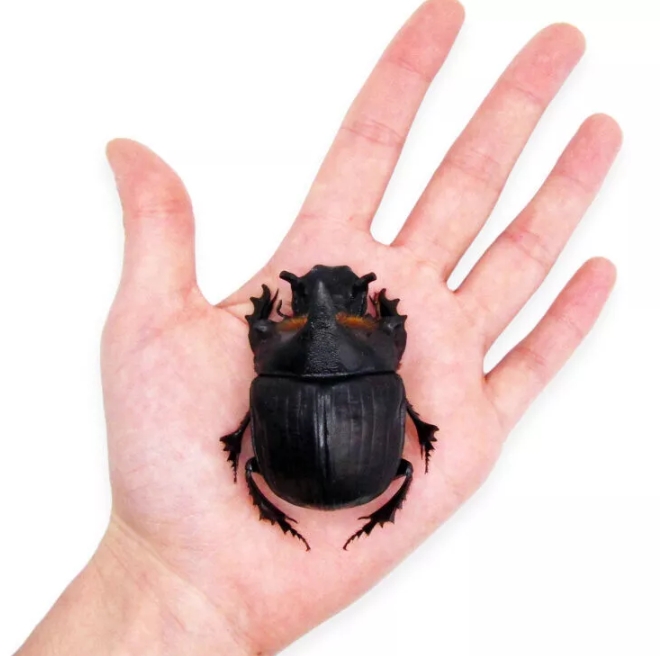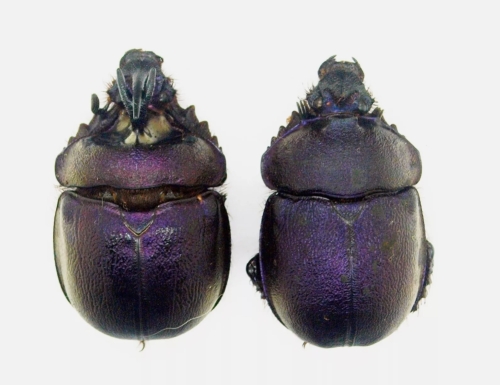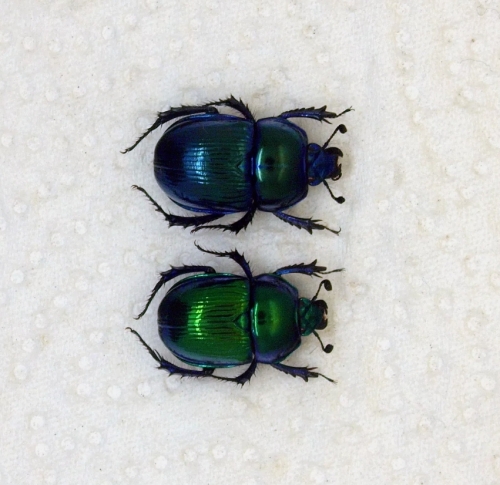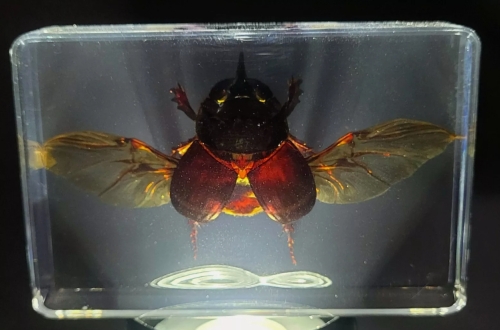Dung beetles, as a unique kind of beetle, play an important role in nature. Dung beetles have an attractive morphological feature, often presenting a smooth surface and a distinctive shell, which makes them particularly notable in the insect world. Dung beetles vary in colour from glossy black to dark brown, with some species even showing an impressive metallic sheen.
Their habits are equally intriguing. Dung beetles feed on dung, especially that of herbivores, and this unique diet has given them an important role in the ecosystem. Dung beetles are not only efficient at breaking down organic matter, but also promote soil health and plant growth. When they look for food, they carefully turn the feces with their forelimbs and use their strong hind legs to roll it into a ball for easy handling and storage.
During the preparation process, the appearance of the dung beetle and its detailed structure are vividly revealed. With careful handling, dung beetle specimens exhibit unique anatomical features, such as the structure of their compound eyes, the shape of their antennae and the connection of their limbs. When viewed under a microscope, dung beetles have a fine line on their skin, an adaptation developed through natural selection.
Dung beetle specimens are not only of great value in scientific research, but also attract the attention of insect lovers and collectors. Viewing a specimen of dung beetle provides insight into the biology of the species and the important role they play in the environment. At the same time, the specimen display also provides an intuitive educational platform to help the public better understand the importance of ecological balance and biodiversity.
As the scavengers of nature,dung beetles contribute to their own strength in obscurity. The preparation and preservation of specimens is not only the recognition of the species of dung beetles,but also the dissemination of ecological environmental protection awareness.
















